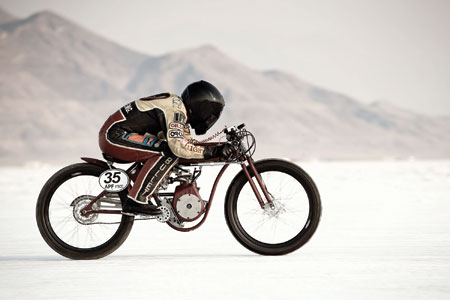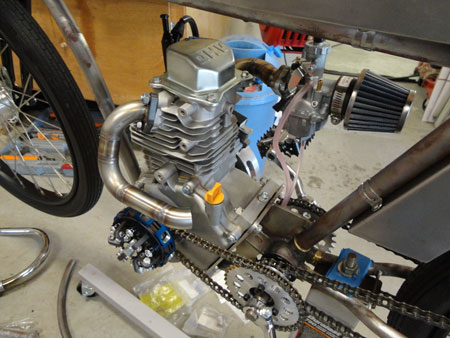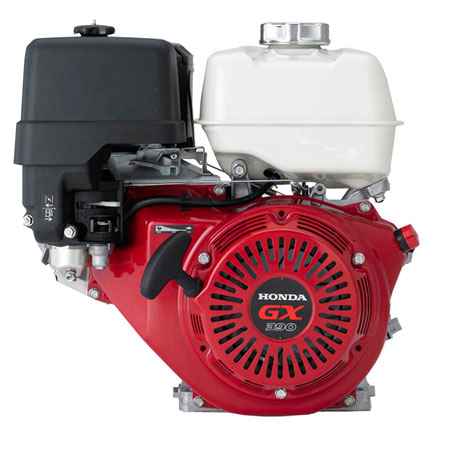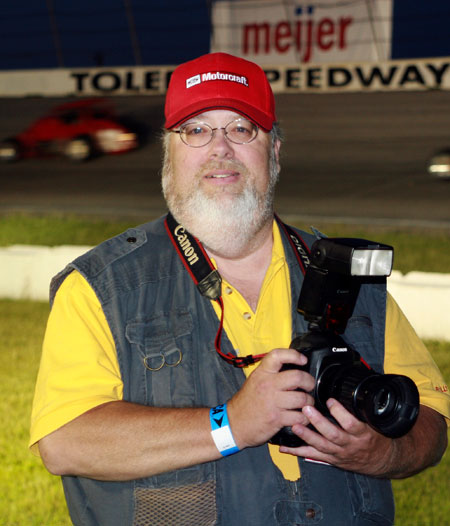Small engines are everywhere. They power lawn mowers, garden tillers, portable generators, all kinds of pumps, go-carts, ATVs, snowmobiles, motorcycles, forklifts, even refrigerated trailers on reefer trucks. Most of these engines are single-cylinder four-stroke air-cooled motors that range in power from 5 to 15 hp or more.
Some have vertical crankshafts and some have horizontal crankshafts. There are also V-twins, three-cylinder and four-cylinder small displacement engines, some capable of producing up to 75 hp or more. Many of these are four-strokes, some are two-strokes and some run on diesel, propane or natural gas.
It’s a broad market that includes a lot of subsegments, so there are ample engine repair/rebuild opportunities.
The question is, can small engine rebuilding be a profitable niche or sideline for a traditional automotive machine shop?
The answer to this question depends on your local market, who your competitors are and most importantly, who your potential customers might be. The key to making money in small engine repair is to find a niche that nobody else is serving, or a niche that is currently being underserved and needs some competition.
You can exploit an existing niche that is already being served by offering machining services that others can’t provide (things like surfacing, boring, milling, honing, welding, crack inspection, etc.), by offering higher quality work, faster turnaround times, more personalized service, custom work others are unwilling or unable to perform, more competitive pricing or warranty coverage or by getting involved in the local powersports market. Opportunity is where you find it.
Finding Your Niche
Some small engines can be profitable to rebuild while others are not. When Joe Homeowner fries the engine in his lawn mower because he never changed the oil in it, he’ll probably junk his old mower and head for the nearest big-box hardware or discount store to buy a replacement.
The same goes for the aging portable generator, garden tiller, snow blower, chain saw or other small gas-powered machine when the engine dies. If you can buy a new one for a few hundred dollars, it probably doesn’t make economic sense to try to repair the old one. Many of these machines are simply disposable commodities.
If a customer does want to repair an existing lawn mower, generator or whatever, it may be easier, cheaper and faster to replace the entire engine rather than rebuild it. Remanufactured engines are available from a variety of sources, so it’s hard to compete in this price-sensitive end of the small engine market.
There are also those who will attempt to do their own engine repairs (often with limited success). But most will seek out a local lawn and garden dealer who does repair work or the local guy who runs a small engine repair business out of his garage or basement. Customers who typically patronize these types of businesses are usually looking for the least expensive repair – which is often a patch job rather than a complete overhaul. Consequently, there’s probably not a lot of opportunity or profit here unless the local market is really underserved.
The best opportunities are to be found where the money is. As the cost of the machine that is powered by a small engine goes up, so does the likelihood that the owner will spend money on engine repairs if the engine fails or develops a serious problem. The motor in a lawn & garden tractor, snowmobile, ATV, motorcycle or personal watercraft is usually worth fixing because the cost of the engine work is much less than what it would cost to replace what the engine powers. A new ATV or motorcycle can cost thousands of dollars versus hundreds of dollars to repair or rebuild the original engine.
As with all types of small engine repairs, you’re competing against backyard DIYers, local powersports and watercraft dealers, small engine repair shops and remanufactured engines from various sources (both local and online). Most of the local competitors are really nothing more than parts swappers or engine swappers. They can take engines apart and replace worn or damaged parts with new parts, or they can replace the original engine with a reman engine that has been sourced elsewhere. But most cannot recondition or machine parts themselves because they don’t have the equipment for doing that kind of work.
They might be able to manually hone a cylinder or drill grind the valve seats, but that’s about it. They can’t bore a cylinder to oversize. They can’t precision hone or plateau hone a cylinder bore. They can’t do a multi-angle valve job or machine a head to accept oversized valves and seats. They can’t remachine or repair a damaged engine case or recondition a worn connecting rod or crankshaft. They can’t balance an engine. They probably lack the proper equipment for crack detection or repairs. So there are ample opportunities for a full service machine shop that can do all of these things, either for other small engine repair businesses or for the engine owner’s themselves.
Powersports Opportunities
Powersports of any kind can be a profitable niche if you have the desire and expertise for this kind of work. Powersports customers are attracted to shops that can offer services or expertise that other shops lack. Performance-oriented customers are often the best kind of customers to have because they want to spend money on their engines. They want modifications and upgrades that increase power and longevity, and are often willing to spend whatever it takes to gain an edge over their competition.
The niche for doing small engine performance work is often totally untapped in many local markets. The closest machine shop or engine builder that offers such services may be hundreds of miles away or in another state. The physical separation between the customer and the shop doing the work adds shipping costs and delays, and increases the risk of miscommunication. Most people would rather deal with their engine builder face-to-face than call or send emails back and forth to someone whom they’ve never met. Offering local powersports customers a local resource for performance work is often all it takes to get their business.
Industrial and Agricultural Market Opportunities
Another profitable niche is rebuilding small engines for industrial, agricultural or even truck fleet customers. This includes forklifts, all kinds of small engine powered pumps, small field generators, small engines for oil drilling rigs, even the engines that power refrigeration units on truck trailers.
With these type of customers, time is often more valuable than the cost of the job itself. When a vital piece of equipment goes down because of an engine problem, the business that relies on that piece of equipment wants it back in service ASAP. Giving these types of customers priority service is an excellent way of not only getting their initial business but for also getting their repeat business.
Produce Top Quality Work to Build Your Reputation
It goes without saying that top quality work is a must for building a good reputation – especially in the powersports and industrial small engine markets. People will spend serious money on a highly modified Briggs & Stratton engine for a go-cart or a Junior Dragster if you can deliver reliable, race-winning engines. Ditto for the Harley owner who wants more power out of his V-Twin so he can keep up with the sportbikes that are trying to blast past him on the highway.
Building a solid reputation takes time, so don’t expect customers to come flocking to your door after you’ve produced one or two engines. As long are you are doing top quality work and your customers are happy, word will get around and you’ll start to build your small engine customer base.
The powersports market requires specialized expertise and experience. It takes time to figure out what works and what doesn’t if you are new to this niche. You can copy what others are already doing, or you can develop your own tricks and techniques that give your engines an edge over the competition.
Much of the know-how that goes into building performance automotive engines translates directly into building small powersports engines – things like porting, valve and seat modifications, flow bench testing, balancing, etc. But if all of your experience has been with large displacement four-stroke engines and start doing small engines or two-stroke performance work, there’s going to be a learning curve before you can reach the top of your game.
Two things you have to keep in mind with respect to rebuilding small engines (especially performance engines). One is that clearances are often different. The other is that some types of cylinders require special finishing procedures. Many of these engines are air-cooled so piston-to-wall clearances will change much more than in a liquid-cooled engine. Cylinders may be cast iron, plated, nickel silicone carbide or aluminum so you’ll need to research the type of honing procedures and surface finish requirements recommended by the engine, piston or ring suppliers.
For example, on two-stroke engines the edges of the ports have to be chamfered after the cylinder has been bored and honed, otherwise it will affect the rings. And if you are installing a cylinder sleeve in a two-stroke engine, you have to go in with a die grinder and carefully match the ports after the sleeve has been installed so it doesn’t interfere with the way the engine breathes. Also, the kinds of modifications that work and don’t work can vary quite a bit with two-stroke engines depending on the application and desired power curve. It often takes a lot of experimentation to find a port configuration that delivers the best results.
Tooling Up
One of the obvious differences between building automotive engines and small engines is the smaller physical size of the components. The cylinder head and bore finishing equipment and fixturing you currently have may be too large or unsuitable for working on small engines. Some small engines also require special tools for disassembly and reassembly. Special tools may also be required for governor adjustments, valve adjustments or other tasks.
Special tools that may be needed for small engine work may include any of the following:
• Special tools for valve work including a small valve spring compressor, valve seat puller, valve guide remover/driver, valve seat cutters (various sizes), small valve guide reamers (various sizes), and valve guide adjuster tools.
• Special tools for camshaft work including cam bearing plug gauges (various sizes) for checking wear and clearances, a camshaft bearing puller, camshaft bearing driver, small flywheel puller and flywheel holder, and magneto bearing puller/installer.
• Special tools for engine bearing work such as main bearing drivers and reamers (various sizes), roll pin drivers, main bearing plug gauges (various sizes), and oil seal driver (various sizes).
• Special tools for small engine pistons and rings like a ring compressor and expander that can handle small pistons and rings, a piston pin fixture for removing and installing wrist pins, and a bore dial gauge set that will fit inside small cylinders.
• Other specialty tools you may find necessary or handy might include a governor spring adjustment gauge (such as the one that is recommended for adjusting the secondary governor spring on Briggs & Stratton V-Twin Vanguard engines, and M29, M30, M35, M38 engines for generator applications), and some type of mechanical or electronic tachometer for checking/ adjusting engine speed settings.
Information Please
Getting into small engine repair also means you’ll need access to OEM service information for these engines, including piston, ring and bearing clearances, valve specifications, torque values and similar data. Service manuals are available from the engine manufacturers and other sources and typically sell for around $30 to $40 per manual. Trouble is, you will probably need a lot of different manuals because most small engine manufacturers produce a wide variety of engines.
The VIN or ID plate, tag or decal on a small engine provides key information about the engine model, specifications and date of manufacturer. Such details are essential for correctly identifying the engine application and for obtaining the correct replacement parts and service information. The ID plate, tag or decal is often located on or under the engine shroud on small air-cooled engines, or somewhere on the engine block or cylinder head. If the tag or shroud is missing, it can make the identification process very challenging.
Correctly identifying an engine is important not only for replacement parts, but also for ignition parts such as spark plugs (which must be the correct heat range and gapped to the correct clearances for the engine to run properly).
To wrap it all up, small engine machine work for local customers, powersports engine modifications and small industrial engine repairs are probably the most lucrative opportunities for traditional full service automotive machine shops that want to expand their local customer base. Exploring these niche opportunities is one strategy for dealing with the ongoing changes in the traditional engine rebuilding market.

















